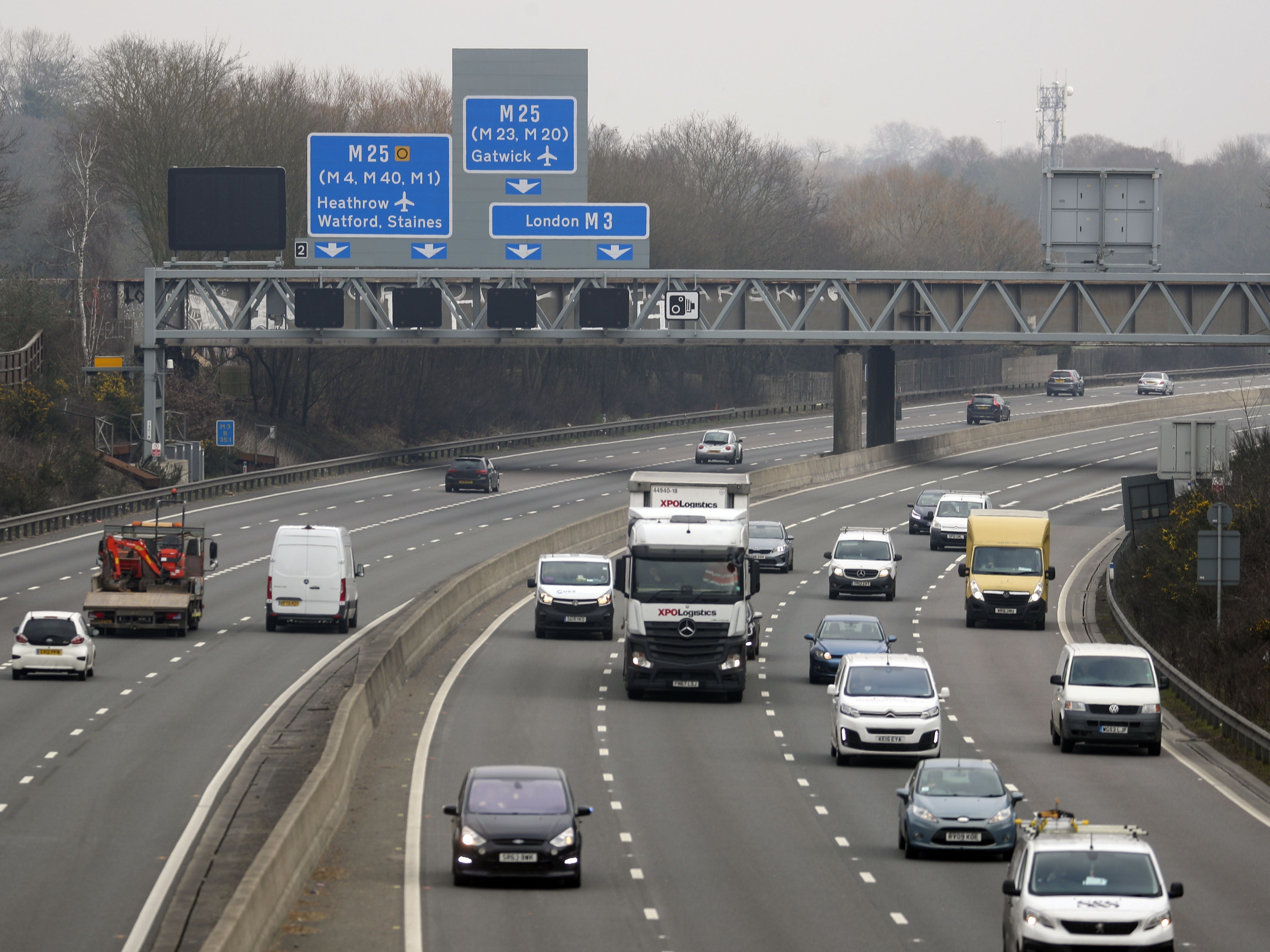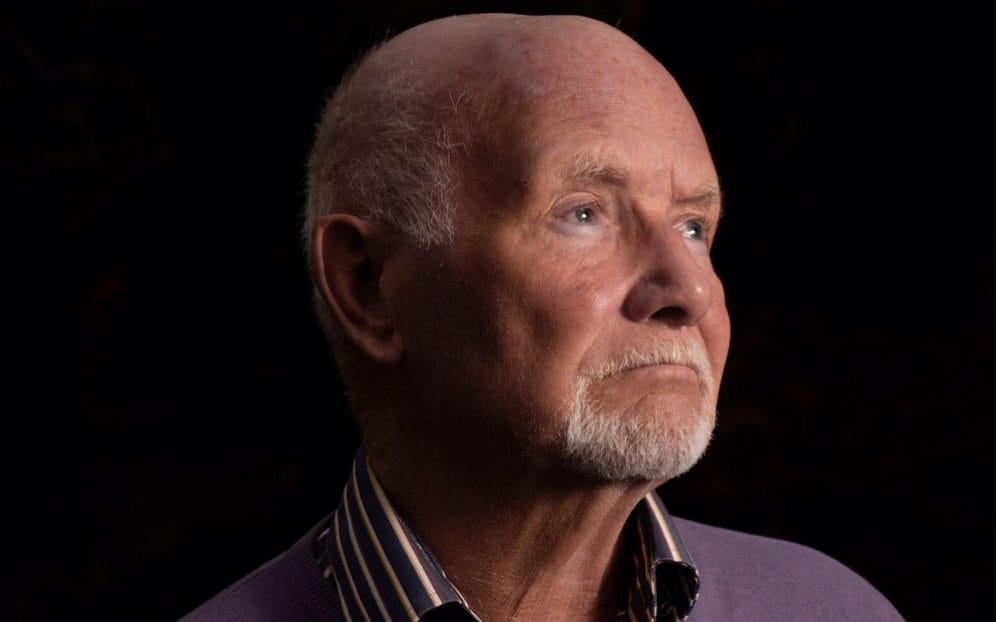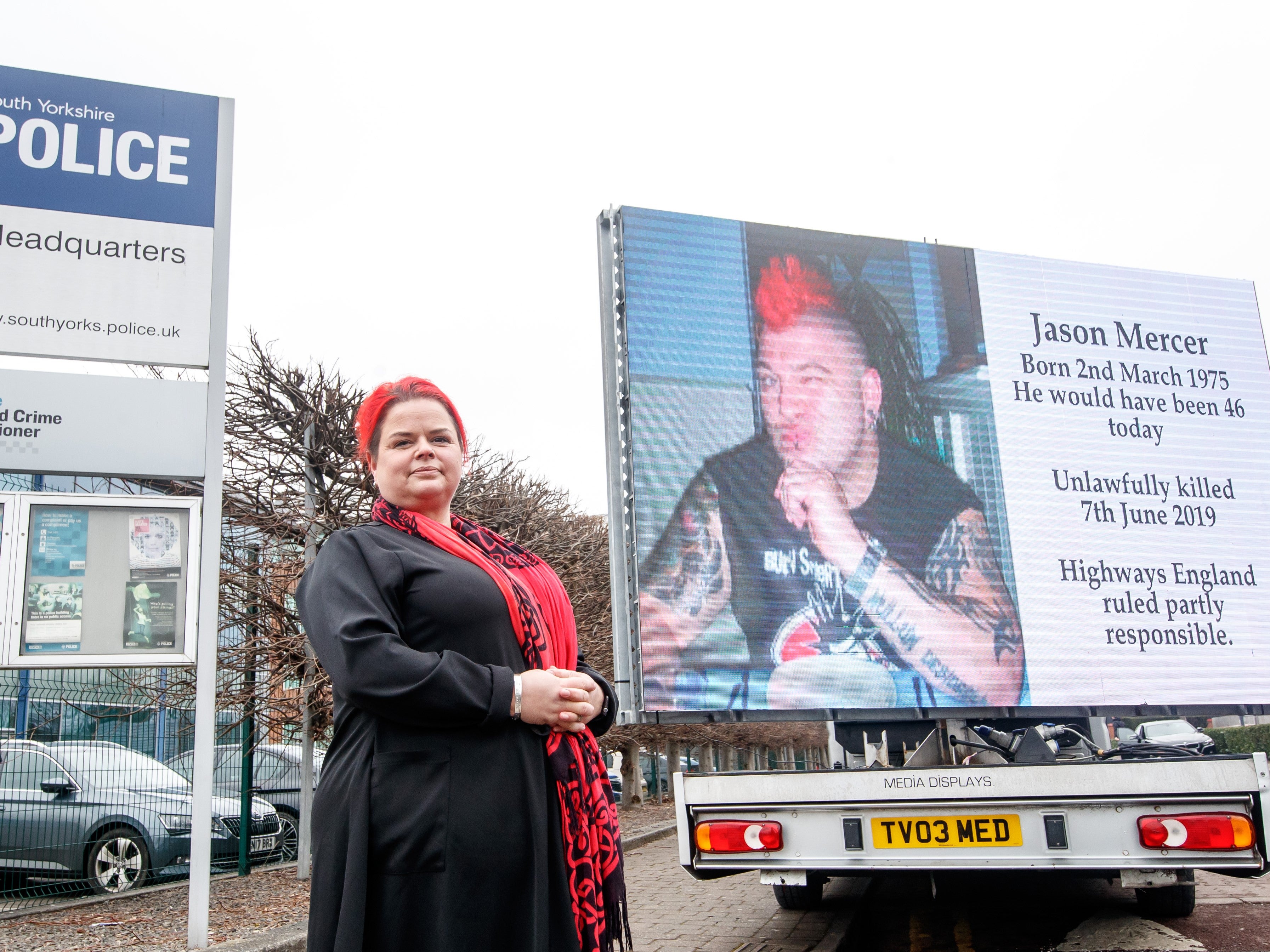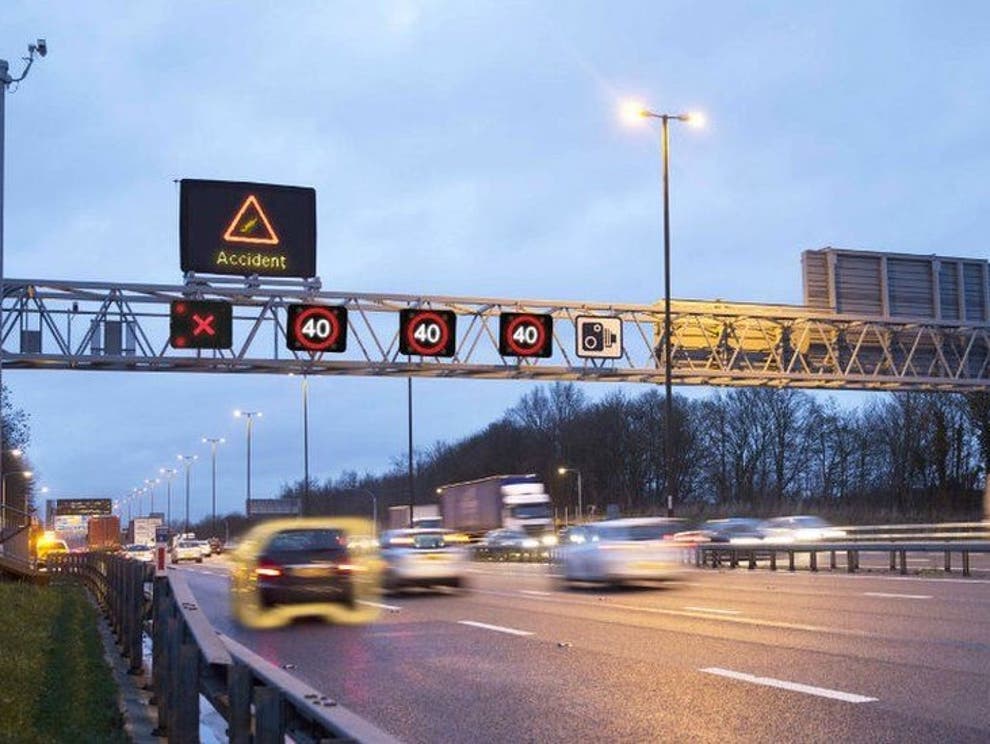‘The road killed them all’: Inside the fight to have smart motorways abolished
Dozens of drivers have died on roads without hard shoulders over last six years – now campaigners will ask a High Court judge to scrap the network once and for all, writes Colin Drury


Derek Jacobs passed his driving test when he was 17 and, in the 66 years since, had never been involved in a major accident.
He taught his wife and his two sons to drive, and there was talk he would do the same for his grandchildren.
At the age of 83 and, still working part-time as an engineer, he continued to travel around the country in his much-loved Volkswagen Crafter van. He was healthy, active and retained the sharp practical intelligence he was known throughout his life for.
Then, on Friday 22 March 2019, he suffered a suspected tyre burst on a smart motorway.
Such was his competence as a driver that Mr Jacobs did everything right in a suddenly horrific situation. He did not jam on the brake, sending the vehicle into a tailspin; he did not oversteer, causing a potential flip. He kept control of the van as it lost speed, pulling it over as far as he could onto the carriageway’s left-hand side. When he came to a halt, he exited from the passenger door and was, it seems, about to climb over the highway’s barrier as government advice dictates.
But his tragic misfortune was to have found himself that lunch time on the kind of road that many experts now suggest may be responsible for dozens of driving deaths.
As a so-called smart motorway, the hard shoulder on this stretch of the M1 in South Yorkshire had long since been scrapped and turned into a live lane. It meant that, when his van came to a stop, Mr Jacobs, from Edgware in north London, had to effectively park in the way of 70mph traffic.
As he tried to climb the barrier, a Ford Ka smashed into the Crafter, sending it hurtling into him. He was crushed between it and the hoarding. He died on the side of the road, 140 miles from home.
“It goes round and round in my mind, day in, day out,” says his widow Sally, 83, today. “Sixty-six years we were together and without him – for that to happen – I wouldn’t wish what he went through on my worst enemy.”
The devastation did not end there that day.
The car that smashed into Mr Jacobs’s van did so with such force that it flipped over and was itself ploughed into by a coach. The driver survived but her passenger, 78-year-old Charles Scripps, did not.
“Can you imagine it?” asks Sally. “Two people lost, just like that.”

The twin tragedy is just one that, this summer, will be presented to a High Court judge in a bid to have the vast majority of the UK’s smart motorway network abolished.
A campaign group, Smart Motorways Kill, is to apply for a judicial review to effectively illegalise M-roads without hard shoulders on the grounds that they are inherently dangerous.
Small incidents (like blown tyres) on such roads, the group will argue, have a habit of ending in catastrophic consequences. Some 53 deaths over a six-year period will be referred to in their evidence. Almost all of them, lawyers will submit, could have been avoided if only the emergency lane had still existed.
Crucially – and explosively – they will suggest officials have long known the extent of this danger but have repeatedly obscured it behind flawed data in a bid to keep rolling more such roads out.
“It’s the job of transport engineers to design the risk out of our motorways,” says Claire Mercer, who leads the campaign and whose husband Jason died on the same stretch of M1 in 2019. “By making the hard shoulder a live lane, they have literally added extra risk in.”
If the group’s action succeeds, the repercussions would be monumental.
Highways England – the government company in charge of the UK’s major roads – would, at a stroke, be told to reinstate the 204 miles of hard shoulders which it has spent the last 15 years transforming into live carriageways. Billions of pounds worth of work would be rendered instantly unusable.
Yet Mercer – a tenacious South Yorkshire woman, red of hair and fiery of character – is quietly confident. “Every time these motorways are reviewed in any independent legal realm, the experts come to the same conclusion; they’re death traps,” she says today. “Coroners see it, police see it, MPs see it. When they look at the evidence, I think a judge will see it too.”
Something, somewhere being obscured
For almost 50 years, British motorways were built with a compulsory hard shoulder. This spare lane was considered essential for vehicles to pull into in emergencies and for ambulance, police and fire crews to use in life-and-death situations.
Then, in 2006, conventional wisdom was thrown on its head. On a clogged-up stretch of the M42 in the West Midlands, the shoulder was repurposed as a fourth live lane. It was the UK’s first so-called all-lane-running smart motorway.
The Highways Agency – forerunner to Highways England – declared the change a triumph of technology over tradition.
The previously unused carriageway, so went the sell, could be safely opened to traffic because a network of sensors, cameras and electronic signage would detect emergencies and temporarily close any stretches where there was danger. It would, advocates said, increase road capacity at minimal cost and without putting motorists at additional risk. In the 15 years since, sections of the M1, M3, M6 and M62, among others, have all had the same adaptations made.
When critics raised concerns, officials responded with hard data.
Annual figures repeatedly showed smart motorways were as safe as their conventional forerunners. If anything, indeed, they appeared safer: in 2018, they accounted for just 12.8 per cent of M-road deaths despite carrying 13.8 per cent of traffic. If you wanted evidence-based policy-making, the implication was, the evidence said build more of the things. So they did.
Yet for Mercer and other campaigners the numbers didn’t stack up. They couldn’t reconcile the figures with the reality of how their loved ones had been lost. They were sure something, somehow, was being obscured.
“There’s always this feeling from Highways England that we don’t understand because we don’t have a degree or we’re not engineers,” the 45-year-old says today. “But I understand enough to know that you don’t make something safer by taking away the primary safety feature.”
Refusing to accept the official reassurances, the group started digging into both the data and the deaths. It is precisely what they found that will now go before a high court judge.

Like a ship without lifeboats
Jason and Claire Mercer first met in a pub in Rotherham in 2005.
“He came over and said ‘Hallo, I’ve seen you around,’ and we never really ever stopped talking after that,” she says.
She loved him because he was different: all tattoos, red hair and heavy metal T-shirts.
On the morning of 7 June 2019, he told her he loved her and left the house for work as a contract manager. It was coming up to 8am when he closed the door behind him. By 8.15am, he was dead.
Shortly after entering onto the M1 at junction 33, the 44-year-old and another driver, 22-year-old Alexandru Murgeanu, were involved in a shunt. With no hard shoulder to pull into, both managed to come to a stop on the far left of the carriageway.
What exactly happened next remains unknown but, if they had attempted to climb over the barriers as seems certain, they would have realised it was a 30-foot drop on the other side. When a HGV came bearing down on them at 55mph, they had nowhere to go. Both men died instantly.
“The bodies were thrown so far they didn’t know who belonged to what car,” says Mercer.
The case became semi-complicated because the truck driver, Prezemyslaw Szuba, later admitted causing deaths by careless driving. He was jailed for 10 months. But, even as he was sentenced, Judge Jeremy Richardson compared a motorway without a hard shoulder to a ship without lifeboats. At a subsequent inquest, a coroner went further; motorways without emergency lanes “present an ongoing risk of future deaths”, David Urpeth said.
“When I first heard how Jason died, I couldn’t understand why he would get out on a motorway,” says Mercer, an engineering buyer by trade. “But then, little by little, it became clear he had no choice. And then I started finding about others who had lost people in the same situation, and for all of them, it was never their fault – or, if they’d made a mistake, it was just a small one. And it was the road that had killed them. It was always the bloody road.”
In total, is is thought 53 people died on such “bloody roads” in the six years up to the end of 2019. At least four coroners have said the lack of a hard shoulder played a significant part in road deaths they were investigating. One of them felt the link was so explicit she referred the case to the Crown Prosecution Service to consider corporate manslaughter charges against Highways England. It remains pending.
The AA and RAC have both raised concerns. In a poll by the latter, two-third of motorists said they felt anxious driving on smarts. One police and crime commissioner, Dr Alan Billings in South Yorkshire, has called for them to be abolished.
“They are fraught with dangers,” he says today. “They have created a situation where, if you are forced to stop, there is no escape. It is common sense that they put lives at risk. And when I see [Highways England saying] these roads are as safe, I have to ask: then why do people keep getting killed on our bit of the M1?”
Perhaps feeling the heat, transport secretary Grant Shapps ordered an evidence stocktake in 2019. Its recommendations, published in March last year, included increasing technology that can detect break downs and having emergency stop areas every three-quarters of a mile (it’s currently every mile and a quarter); but mainly they emphasised the need for drivers to be more “educated” about the new network.
When Shapps phoned Mercer to give her a heads-up ahead of the report’s publication, she asked him one simple question: how do you educate a broken-down car into moving again?
He laughed and said she always made his job hard. “He wanted a widow to stand with him and say, actually, smart motorways will be safe now,” she says. “I told him his recommendations wouldn’t have saved a single life.”

‘A national scandal’
All of which brings us back to Mercer’s own digging.
Over two years, she and fellow campaigners have commissioned lawyers and engineers to scrutinise the Highways England data. They have sent out dozens of FOIs. They have held innumerable round-table meetings.
And what they now argue is that the official safety data hides something crucial within it.
It is this: the technology deployed on smart motorways has indeed greatly reduced the risk of a major accident between two moving vehicles because it allows speed limits to be varied and traffic better filtered. Lives have been saved in this way. But, conversely, where hard shoulders have been removed, the risk of a major accident involving a moving and stationary vehicle has increased.
That is to say, the safety improvements gained by introducing sensors, cameras and electronic signage have then been wiped away by axing the emergency lane. At some point, it seems, a decision appears to have been made that, in order to increase motorway capacity, it was acceptable to build avoidable deaths into the network.
To go back to Judge Richardson’s shipping analogy: it is the equivalent of improving a vessel so it is less likely to sink but then getting rid rid of the lifeboats to cram on more passengers.
“I think,” says Mercer, “we are talking about a national scandal. They have killed people.”
All this has now been detailed in a 220-page report compiled by the respected transport engineer Sarah Simpson and sent to Highways England itself. Among its own figures, it states that drivers breaking down on motorways without hard shoulders are at three times greater risk of tragic consequences than on regular M-roads.
The company must now legally respond to this report. Once it does so, the response – whatever it is – opens the legal door for campaigners to apply for the judicial review that, they hope, will see the very existence of smart motorways decided by the high court.
A long-term transport plan needed
Yet even if a judge ends up ruling in the government’s favour, there is a Plan B: the Labour Party.
It has now vowed to reinstate all hard shoulders should it come to power at the next election.
“People do not want us to sit on the fence on an issue this important,” says shadow transport secretary Jim McMahon. “So we are clear: on day one of a Labour government, the call will be made to Highways England and we will tell them to put a red X on that lane, stop traffic using it straight away, and make it a hard shoulder again.”
There is a pause for apparent emphasis. “On day one,” he repeats.
The technology would be kept, he says, but even so, wouldn’t he be concerned that such action would immediately reduce the country’s transport capacity and lead to rush hour jams?
“None of this is without consequences,” comes the reply. “But it’s about choices. What we’re saying is the reduction of capacity that comes with this is far outweighed by saving people’s lives.”
The country needs to reduce its reliance on motorways for the sake of its climate commitments anyway, he reckons. More freight especially needs to be shifted to the railways. “Our road networks are seeing bottlenecks because there are far too many goods being shifted on the roads,” he says. “We need a long-term plan to completely change that.”
For campaigners, this is winning talk.
Mercer still has Jason’s ashes on a windowsill. He was a huge fan of astronomy and she plans to have them fired into orbit – but not until her campaign is victorious.
“There’s a company in Sheffield that does it and I’ve spoken to them and told them once these motorways are got rid of, I’ll be on the phone,” she says. “That the moment we’ll blast him up into the stars.”
What Highways England says
In an email to The Independent, Highways England maintained that smart motorways without hard shoulders are safe. People’s perceptions, it appeared to suggest, were the issue. “We understand that the perception of risk when breaking down in a live lane remains a concern amongst road users,” its statement said.
In the same email, Nick Harris, the company’s chief executive, added: “Every road death is a tragic loss of life and we are determined to reduce the number of fatal incidents, and injuries, on our roads.
“The government’s evidence stocktake of the safety of smart motorways analysed a wealth of data and found that in most ways they are as safe as, or safer than, conventional motorways.”
A spokesperson for the Department for Transport said the “safety and peace of mind” of drivers “remains our priority.”
They added: “Since taking office, the secretary of state has expressed his concerns over smart motorways. Ordering the stocktake review was one of his first actions and he has committed £500m to safety improvements.”
Join our commenting forum
Join thought-provoking conversations, follow other Independent readers and see their replies
Comments
Bookmark popover
Removed from bookmarks